Lunges Exercise: Benefits, Type, Variations, How to do?
What is Lunges exercise?
- Lunges Exercise are very effective exercise for strengthening of legs and buttocks.
- Lunges mostly target larger muscle groups of your lower body.
- This boosts your metabolism and helps you to lose weight much faster.
- When this excess fat is removed, lunges work on the shape and strength of your lower body.
- Lunges are a lower body unilateral exercise since you work on each side of your leg independently.
- The one leg movements activate your stabilizing muscles to develop balance, coordination, and stability of joint.
- The lunge is a very popular leg-strengthening exercise with a lot of variations to add variety to your daily workout .
- Doing lunges in different variation allows your different muscles or parts of those muscles to work.
- This exercise is beneficial for injury prevention, as well as rehabilitation after injuries occur in legs.
- It is often part of a foundational strength program or rehabilitation protocol, allowing athletes and sports man to return to their activity of interest as soon as possible.
- The lunge is also a functional exercise that prepares you for movements helpful in daily life.
- When we walk ,get up from ground running,ascending or descending stairs climbing.
- This powerhouse move works many of the large muscles of the lower body in a single exercise.
- It has lot of benefits and is easy to perform at home.
- Here we will discuss benefits as well as variations and which muscle work in lunges.
Which muscles do a lunge? (lunges work what muscles)
- In a lunge exercise, many muscles work for mobilize and stabilize the upper and lower body.
- Quadriceps muscle
- Gluteal muscles
- Hamstrings
- Calves (gastrocnemius and soleus)
- Transverse abdominis
- Obliques
- Multifidus
- Erector spinae muscles
Lunges exercise Benefits:
Here some benefits are given by doing lunges:
Core stability
- A proper lunge exercise can help you to achieve a stronger and more stable core muscle.
- This exercise helps to engages your core and abdominal muscles.
- It helps you to build stability for moving your hips up and down side.
- A stronger core allows you deal with lower back pain and helps to improves your balance and maintain your posture as well.
Better balance
- Lunges exercise train unilateral part of your body independently from the other at same time.
- This can help you to achieve proper body balance and coordination.
- The stabilization benefits achieved from lunges is much better than other exercise like squats and dead lifts.
Strengthens legs and gluteal muscle
- Lunges are quite effective in terms of strengthening legs and gluteal muscle.
- Lunges target large muscle groups of your lower part of body;
- This improves your metabolism and helps you to reduce weight much faster.
- When your excess fat is removed, lunges work on the shape of body and strength of your lower body.
Hip flexibility
- Flexor muscles are mostly ignored in other forms of exercise in a workout.
- A sedentary lifestyle are the reasons why the flexors group of muscle to become tight.
- Lunges can help you to make your front thigh more flexible.
Better spinal health
- While many exercises put pressure on your spine, lunges help to reduce that stress it give your spine a time to relax.
- While working on other parts of your body, lunges take stress free your spine, make it mobile and pain-free.
Makes you more functional
- Exercise which makes you more functional or flexible is one which impacts your natural, every day movements like walking ,running sit to stand.
- Lunges are one of the best exercise which makes you more functional.
Great exercise for runners
- The lunge is a very good exercise for runners in that the mechanics of muscle work are similar to running.
- The step out to landing is similar to the movements of a running steps
How to do a proper Lunges exercise?
- It is important to do lunges in proper way.you have to do this pain free.
- Cannot put too much pressure on your hip and knee joints otherwise it may result in an injury.
- Here we explain how you must do a proper lunge
- Lunges strengthen your glutes, quadriceps, and hamstring muscle.
- For this you have Stand on a floor with feet together and step your right leg forward in front of you.
- Your left knee should touch the floor with your right leg still at a 90-degree angle.
- A mirror can help you to check your body alignment and position.
- Push off your right foot to return to the starting position Step forward with your left leg and form a ninety degree angle to touch your right knee to the floor.
- Repeat for 4 to 5 sets of 10–15 lunges.
There are some variations in lunge exercises:
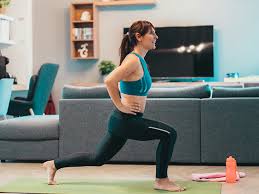
Static Lunge
- Static lunges are great exercise for working all of the major muscles group of the hips, butts, and thighs.
- In this basic lunge variation, you are simply dropping your knee down rather than stepping forward or back.
- Stand with your right foot forward and left foot back so they are about three feet apart.
- You have to bend your knees to lower down body towards the ground.
- Do not let the front knee extend beyond the toes and lower straight down rather than forward.
- Try to maintain your trunk straight and abs in as you push through the front heel and return to a starting position.
- Do not lock your knees at the lunges movement.
- Perform 2 to 3 sets of 12 to 16 reps.
Assisted Lunge
- This is a great variation for beginners who want to do lunges but worry about losing their balance.
- This variation is just like a static lunge but in this, you are using a chair or wall to maintain balance.
- Stand with your right leg forward and left leg back. Hold a chair or wall for balance.
- Bend the left knee and put it down toward the floor until a few inches from the ground and the front knee is at a right angle or 90 degrees.
- Take your front knee behind the toes and be sure to lower down rather than go forward.
- Keep your trunk straight and abs in as you push through the front heel and return back to the starting position.
- Perform 2 to 3 sets of 12 to 16 reps.
Low Lunge
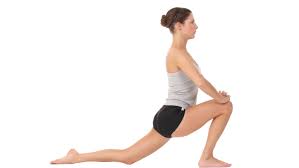
- The low lunge is most likely a variation of the traditional lunge. You have to stand with feet close together and your knee may feel less strain but short-range motion really adds some difficulty.
- You have to stand in a split stance your one foot forward and one foot backward.
- Take a dumbbell in both hands and bend your knees, taking your weight towards the ground.
- This is the starting position of the movement. engage your abs and shoulder back, push up into the front leg heel lift up about halfway.
- Then lower down touch the floor and repeat again this movement.
- Do 2 to 3 sets of 10 to 15 repetitions in one session.
Walking lunge
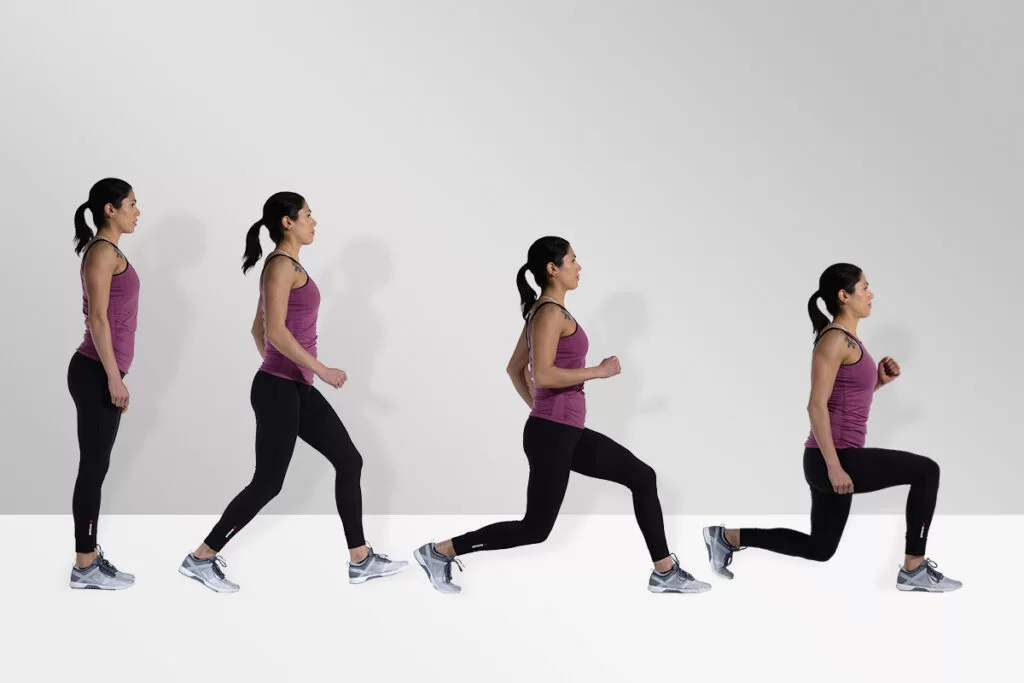
- The walking lunge is mostly done walking forward but it can also be done with walking backward.
- It puts a great stress on the gluteal muscles, medial quadriceps, and hamstring muscles
- You have to stand with feet apart.
- Take your right leg forward and bend both knees, lower down your leg until your knees make a ninety-degree angle.
- Shift forward on left leg. Push off both leg and take a step every time you make a lunge position.
- Do this for 15 to 18 repetitions with an alternate leg. One variety of walking lunges is the forward lunge.
- This variety of walking lunge is easy and needs less balance
- Then other, you also make it hard by adding some weights.
- If you want to make it hard then go for weighted lunge in starting phase you can only add lighter weight then go for more.
- For weight purposes, you can use dumbbells or barbells.
- Do 2 to 3 sets of 10 to 15 repetitions in one session.
Back lunge
- The back lunge is performed just like the forward-stepping lunge, except your back foot is the one that is in the moving phase.
- In this we more emphasis on back thigh muscles like the hamstring and gluteal muscles.
- For this, you have to stand with your feet apart and step backward with your right leg and your left leg in a same standing position
- You have to bend your right knee 90-degree angle as you lower yourself.
- Now back to the starting position.do this for the left leg.
- Repeat 8 to 10 times for each leg.
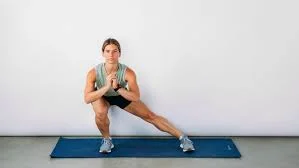
Lateral lunge
- The lateral lunge is performed just like the forward-stepping lunge, except you move your foot to the lateral side.
- One that is in the moving phase. In this we more emphasis on inner thigh muscles like the adductors muscle.
- For this, you have to stand with your feet apart and take steps by your one side laterally with your right leg and your left leg in the same standing position you have to bend your right knee 90-degree angle as you lower yourself. now back to the starting position.
- Do this for the left leg. repeat 8 to 10 times for each leg.
Curtsy lunge
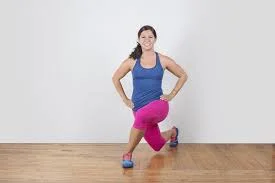
- In this variation of lunge puts more emphasis on the gluteus medius and hip adductor muscle. Gluteus medius works throughout the crusty lunge to stabilize your pelvis.
- For this exercise, you have to stand in cross leg position the heel of your back foot will elevate off to the ground
- You have to bend both knee down until your front thigh is just parallel to the floor.
- Try to engage your core muscles and your knees directly move to your toes.
- The gluteus medius works throughout this exercise to stabilize your pelvis while you lunge position with a crossed leg, and the inner thigh muscle work to hold your legs in that position as you lower.
- Now straighten your both legs, now you have to do this for another leg cross and repeat the movement explained above.
- Do 10 to 15 reps on each side.
Dumbbell lunges
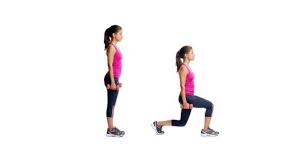
- In this variety of lunges, you need two dumbbells of the same weight which you comfortably lift with lunges exercise.
- For this exercise, you have to Stand with your right foot forward and left foot back so they are about three feet apart.
- You have to hold dumbbells in your both hands and hands by your side.
- You have to bend your knees to lower down body towards the ground.
- Do not let the front knee extend beyond the toes and lower straight down rather than forward.
- Try to maintain your trunk straight and abs in as you push through the front heel and return to a starting position.
- Do 12 to 15 lunges on each leg for 2 to 3 sets. Do not lock your knees at the lunges movement.
Sliding Lunges exercise :
- This sliding lunge is a new variation on a traditional exercise and in this muscles of the hips, glutes, and thighs are in different positions.
- You can do this exercise by using paper plates, a towel, or gliding discs.
- You have to stand with feet apart,your one foot resting on the sliding disc .
- Bend your right leg at same time left foot sliding go backward to lunge position.
- Try to take your right knee behind the toe and keep the left slightly bend
- Also shift your body weight towards the front foot so you control the foot which is resting on the slide.
- Slowly slide the left foot back to starting position push the sliding disc.
- Repeat for 10 to 15 times on same leg then go for another leg .
Sliding Side Lunge
- Sliding side lunges are another variation.
- By placing your foot on a paper plate, towel, or gliding disc.
- You can target the inner thigh of the sliding leg while working the hips and thighs of the lunging leg.
- Stand with feet hip-width apart and place the ball of the left foot on the plate, towel, or disc.
- Bend the left knee, sitting back into the heel as you slide the right foot out to the side Keep the left knee behind the toe, your trunk is straight, and abs in.
- Press into the sliding disc to contract the adductor muscle and slide the right foot back.
- Do this for 10 to 15 reps with 2 to 3 sets. and then do this for another legs.
Split Squat
- The split squat is a compound leg exercise which use multiple muscles in your lower body, including your hip flexors, hamstrings, quadriceps, and glutes as well.
- When it doing With proper form, split squats helps to increase leg strength and enhance flexibility of leg.
- You have to standing straight, take a long step forwards as like a lunge. The heel of your back foot should be elevated.
- Keeping your trunk straight,then slowly lower until your back knee almost touches the floor,
- Then push back up. do all your 10 reps on one leg, then go for the other leg.
- Keep your knees in line with your foot fingers, especially on the front leg, and don’t let the front knee stray past your foot as you lower.
- Do 2 to 3 set of 10 to 15 repetition in one session.
Barbell Lunges exercise
- If you want to add some challenges to your lunges, using a barbell is one way to do.
- A barbell distributes weight more evenly across your arms so you can lift heavier than you may be able to with the dumbbells.
- To do this exercise safe, only use a weight which you can easily lift.
- Take a medium-heavy barbell on the mass part of your shoulders (use a bar pad if you need to) and take the right foot forward, left foot back in a split stance phase.
- Try to straighten your trunk and engaged your abs bend the right knee ninety degree and left knee touches to the floor.
- You can lower down as much as you can do.
- Now return to starting position .
- Now left foot forward and right foot back do the same movement as above.
- Do this for 2 to 3 times with 10 to 15 reps .
Sliding Side Lunge with Weights
- This is advanced exercise in lunges.it targets the glutes, hips, thighs, and core muscle work all at the same time.
- By using a paper plate (or towel or disc) and sliding one leg in and out, you add some intensity to the normal side lunge.
- Taking the weights toward the ground engages your core, making this a moving exercise that will really challenge you.
- You have to stand on a ground with one foot on a sliding disc and other foot on the ground.
- Push your hip joint back and slide disc lateral side and another leg knee is bend .
- Elevate your both hands out in front of your body move your weight to the slide foot.
- When your bend knee reach up to 90 degree and your leg stretched leg fully extended then sliding your foot back to starting position.
- Repeat for 10 to 15 reps and then do for another leg side , you have to complete 2 to 3 sets in one session.
Side Lunge with Kettle bell Lift
- A kettle bell lunge is also a very good exercise to improve your single leg strength as well as developing flexibility in the hips which is excellent for sports man strength and general mobility.
- You have Stand tall with your both feet together holding a kettle bell by the handle with your both hands.then take your one leg lateral and lower down into a squat position and keep your another leg straight.
- Give a more push on your squat leg to return back to the starting position.
- Do this for another leg in this same movement following.
- Do 2 to 3 sets of 10 to 16 reps in one session.
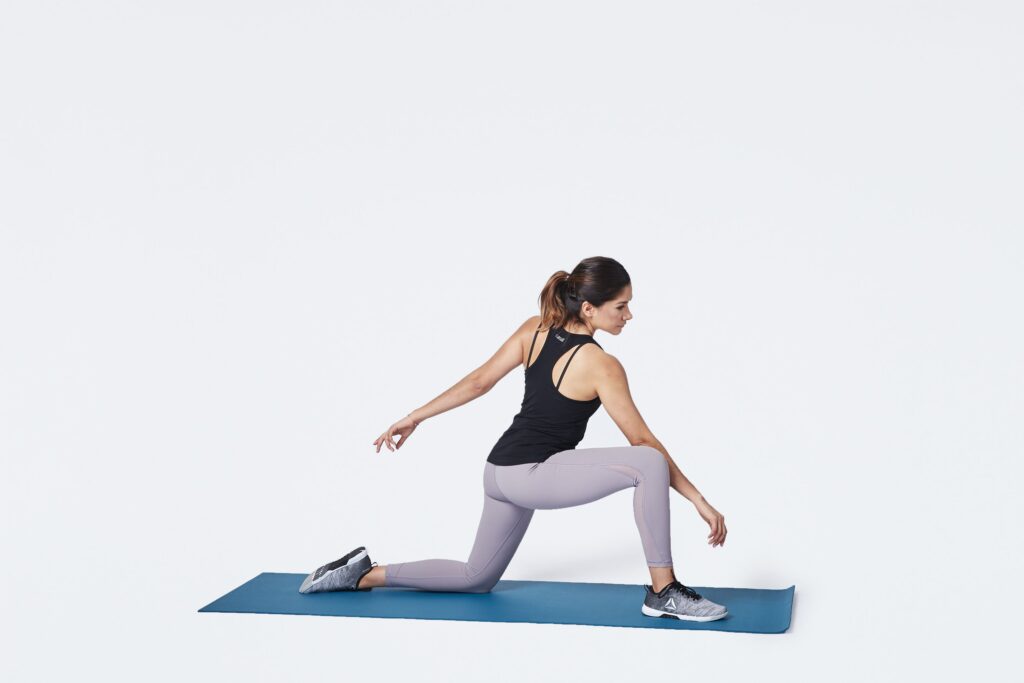
Split Squat With Rotation
- The split squat is a single leg exercise which increases your lower body strength, muscle hypertrophy, balance, and stability also.
- This exercise really challenge your glutes and core muscle with this elevated split squat with an added rotation in the trunk with opposite direction.
- For and place your right foot on the top and resting on the toe.now get to your balance and take your both arms out to the sides now you have to bend left knee bend into a lunge position .
- Take your arms to the left side with trunk rotated.
- Then rotate back to starting position and stand up doing this exercise you have to stand about 3 to 4 feet steps.
- Repeat 10 to 15 repetition on one leg or do with alternate leg and gradually increases repetition on one leg.
One-Legged Lunge With a Reach
- This variation is include compound movement,which is helpful to improve balance and stability.
- This one legged reach lunge Involve entire body in one exercise.
- Place your right foot and shin on a ball and hold some light weight dumbbell in your left hand bend your left side knee into a lunge .
- At same time you have to roll the ball out with your right leg until its is straight and bend your left knee 90 degrees .
- At same time you have to reach the weighted hand out .squeeze your right leg and roll ball back to starting position .
- Do this for 10 to 15 times before switching to the another leg. first you try this exercise without holding weight to your hand.
- You also stand near to wall for hold if you feel loss of balance.
Lunges Exercise Video
When you not to do lunges exercise?
- Hip injury
- Knee injury
- Recent surgery of leg
- If you feel any pain during the exercise.
- If you have balance issue then go for easy variation in this exercise.
- If exercise will increase your pain.
FAQs
What are lunges good for?
Large lower-body muscles, such as the glutes, hamstrings, and quadriceps, are worked during lunges. This strength-training exercise can improve flexibility, reduce muscle imbalances, and speed up metabolism. The most popular variation of this exercise is the forward lunge.
Are lunges better than squats?
Squats are the finest exercise for lower body workouts since they are more balanced than lunges and need less coordination, making them better for beginners. Squats train your quadriceps, thighs, glutes, calves, core, and hamstrings.
Are lunges bad for hips?
Injury may result from overstretching or overusing the hip flexor muscle. Deep, abrupt aches in the pelvis come from this. Your hip flexors are particularly stressed during exercises like running, lunging, and squatting.
Do lunges slim thighs?
Lunges is the best exercise for reducing thigh fat. They improve muscle strength and speed up your metabolism while working not only your glutes but also your quadriceps, hamstrings, and thigh adductors.
Should I do lunges everyday?
5 Motivators to Perform Bodyweight Lunges Daily
You shouldn’t perform lunges with weights more frequently than every other day because your muscles require more time to heal. However, there are benefits to performing bodyweight lunges every day of the week.
Do lunges tone your legs?
Lunges enhance your body’s muscular mass, strengthening and toning your legs, core, and butt.
How many lunges should I do?
Aim for three to four sets of 15-20 repetitions each leg for body-weight lunges. For their first few sets, beginners should perform 10–12 repetitions of each leg. If you’re using a barbell or dumbbells to add external resistance to your lunges, use a weight that enables you to complete 12–15 lunges each leg for three–four sets.

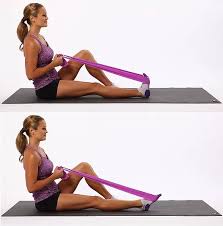


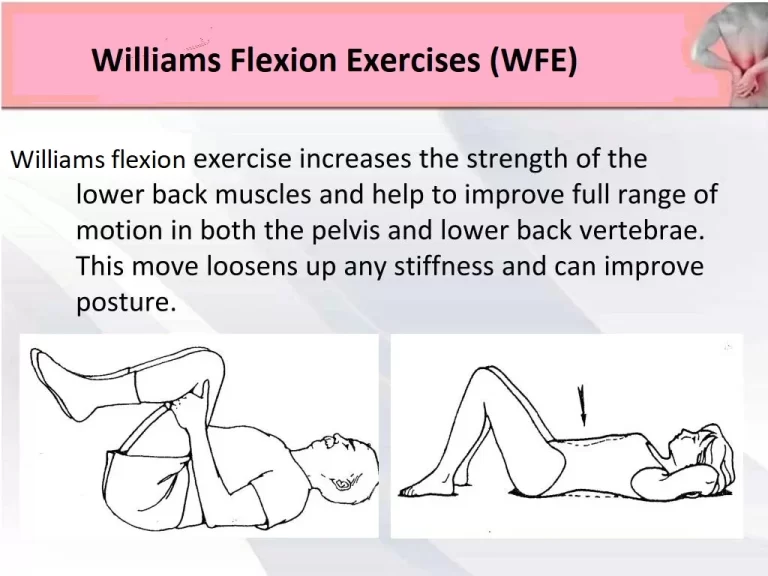
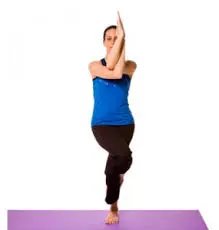
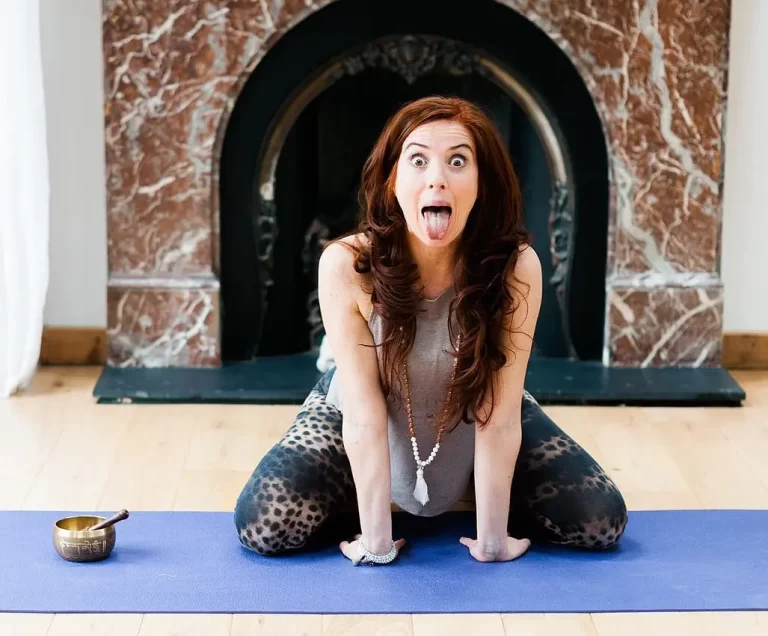
One Comment